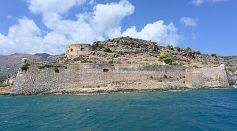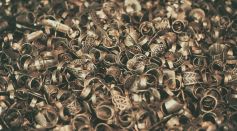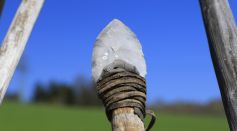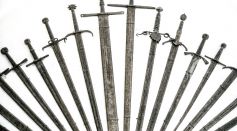Tags: Bronze Age
Mysterious Seahenge From Bronze Age Possibly Linked to Climate, Environment and Regional Folklore [Study]

Rare Wooden Structure From Bronze Age Discovered by Archaeologists in Well-Preserved Condition
4,000-Year-Old Teeth Reveal Microbiome From Bronze Age; What Does Bacterial Genome Say About Evolution of Human Diet?
3,700-Year-Old Lipstick Discovered in Iran Could Be the Oldest Ever Found; Ancient Cosmetics Bears Resemblance to Modern Ingredients
1,400-Year-Old Tomb Discovered in an Anglo-Saxon Cemetery; Remains of Teenage Girl Buried With Lavish Jewelry

Hidden Bronze Age Megastructures Uncovered in Serbia Using Satellite Imagery Challenge Understanding of Prehistoric European Societies

Bronze Age Jewelry Stash Unearthed by Metal Detectorist in Freshly Plowed Carrot Field in Switzerland

Extremely Rare Quartzite-Tipped Bronze Age Arrow Found After Spending 3,000 Years in Ice and Snow
3,700-Year-Old Well-Preserved Brain, Skin From Bronze Age Individuals Found During Excavation in Turkey
Bronze Age Pyramid Built With Great Precision, Very Complex Construction Discovered in Kazakhstan
Bronze Age Weapon Arrowhead Excavated in Switzerland Made From Iron Meteorites

Oldest Wooden Comb, Gold Hair Ring Discovered in British Bronze Age Burial, Revealing Prehistoric Craftsmanship

Bronze Age Mound Cemetery Discovered Near Historic Stonehenge; Over 20 Barrows Found at the Area

3,000-year-old Well-Preserved Octagonal Sword Found in Bronze Age Burial Area in Germany

Village Full of Copper Deposits? Here’s Why It Was a Vital Trade Center During Late Bronze Age

‘Replica’ Sword at Chicago Field Museum Turns Out To Be Bronze-Age Relic Which Is Now 3,000 Years Old

3,600-Year-Old Irregular Cuts of Precious Metal Could Be the Earliest Silver Currency During the Bronze Age in Israel and Gaza, Study Suggests
The Bronze Age Collapse and the Driving Forces Behind the Fall of Mighty Civilizations

Vast Paleogenetic Study Reveals Migration Patterns, Agriculture Expansion, Language Development in the Southern Arc Region

About 200 Human Remains Under Same Family Unearthed from Undisturbed Bronze Age Funeral Pyre in Italy
Most Popular

Say Goodbye to Dark Spots: The Science Behind Dark Spot Remover Creams

Persistent Coughs Are Everywhere: Here's What Experts Think Is Causing It

Ancient Hotspot Found to Have Created Great Lakes 300 Million Years Ago

Mysterious Structures Discovered Beneath the Pacific Ocean, Puzzle Scientists




